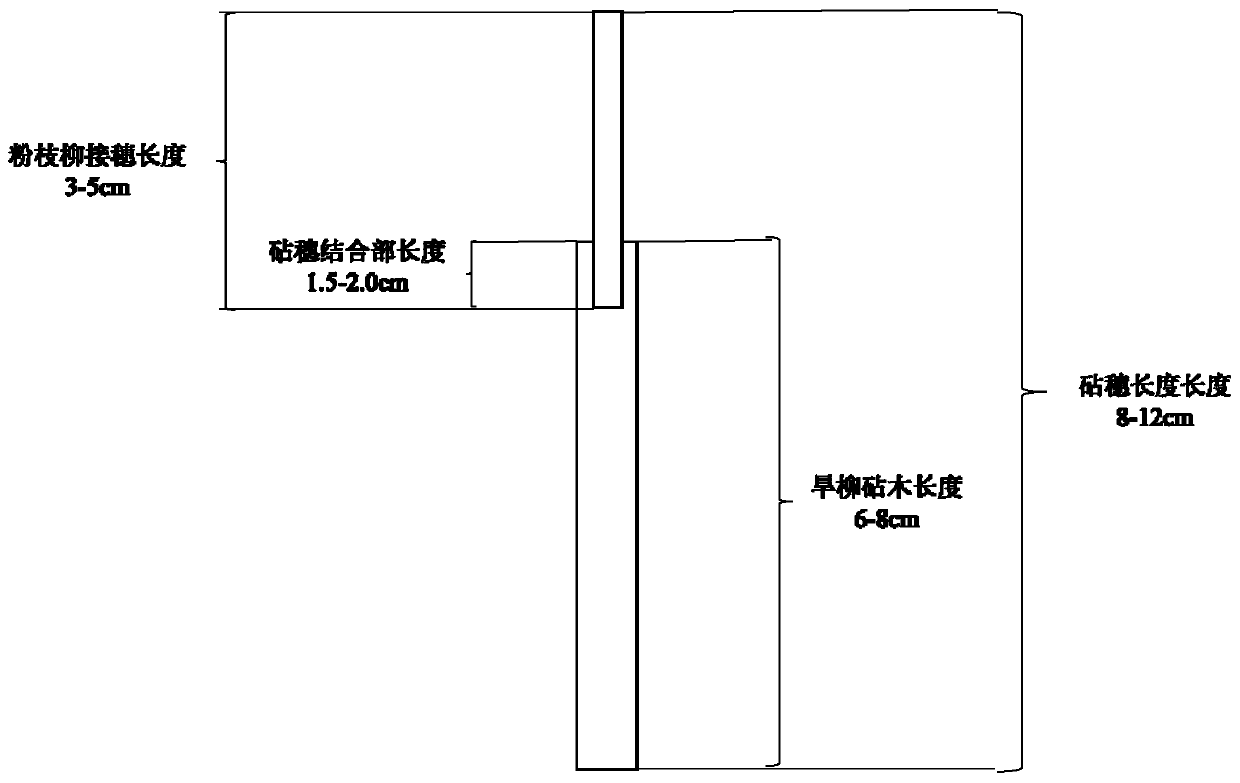A method for improving the survival rate of asexual reproduction of Willow chinensis
A technology of asexual reproduction and survival rate, applied in vegetative propagation, botany equipment and methods, horticulture, etc., can solve the problems of large variation in seedling shape, difficulty in seed collection, and short storage time of seed vitality, so as to improve the survival rate and raise seedlings The effect that the facility is simple
- Summary
- Abstract
- Description
- Claims
- Application Information
AI Technical Summary
Problems solved by technology
Method used
Image
Examples
Embodiment 1
[0032] A method for improving the survival rate of asexual reproduction of Willow chinensis:
[0033] Step 1, seed selection: select the excellent variety of willow willow, one-year-old robust seedling trunks or branches on young trees, with a diameter of 0.5cm. The seedlings or branches are strong and free of diseases and insect pests, and the side buds are full.
[0034] Step 2, scion preparation: the seed strips are cut short to make scions, each scion is 3.0cm long, and only one leaf bud on the top is kept. The bottom of the scion is cut into a wedge shape with a wide outside and a narrow inside with a grafting knife. The length of the cut surface is about 1.5cm, and the cut surface is kept smooth to prevent damage to the cut surface, which will affect survival.
[0035] Step 3, rootstock extraction: select dry willow 1-year-old robust seedlings or branches on young trees as rootstocks, the rootstock length is 6.0cm, the thickness is determined according to the thickness o...
Embodiment 2
[0043] A method for improving the survival rate of asexual reproduction of Willow chinensis:
[0044] Step 1, seed selection: select the excellent 2-year-old strong seedling trunk of Willow chinensis or the branches on the young trees, with a diameter of 1.0 cm, the seedlings or branches are strong and free of diseases and insect pests, and the side buds are full.
[0045] Step 2, scion preparation: the seed strips are cut short to make scions, each scion is 5.0 cm long, and only one leaf bud on the top is reserved. The bottom of the scion is cut into a wedge shape with a wide outside and a narrow inside with a grafting knife. The length of the cut surface is about 2.0cm, and the cut surface is kept smooth to prevent damage to the cut surface, which will affect survival.
[0046] Step 3, rootstock extraction: select dry willow 2-year-old robust seedlings or branches from young trees as stock, the rootstock is 8.0cm long, and the thickness is determined according to the thickne...
PUM
 Login to View More
Login to View More Abstract
Description
Claims
Application Information
 Login to View More
Login to View More - R&D
- Intellectual Property
- Life Sciences
- Materials
- Tech Scout
- Unparalleled Data Quality
- Higher Quality Content
- 60% Fewer Hallucinations
Browse by: Latest US Patents, China's latest patents, Technical Efficacy Thesaurus, Application Domain, Technology Topic, Popular Technical Reports.
© 2025 PatSnap. All rights reserved.Legal|Privacy policy|Modern Slavery Act Transparency Statement|Sitemap|About US| Contact US: help@patsnap.com

